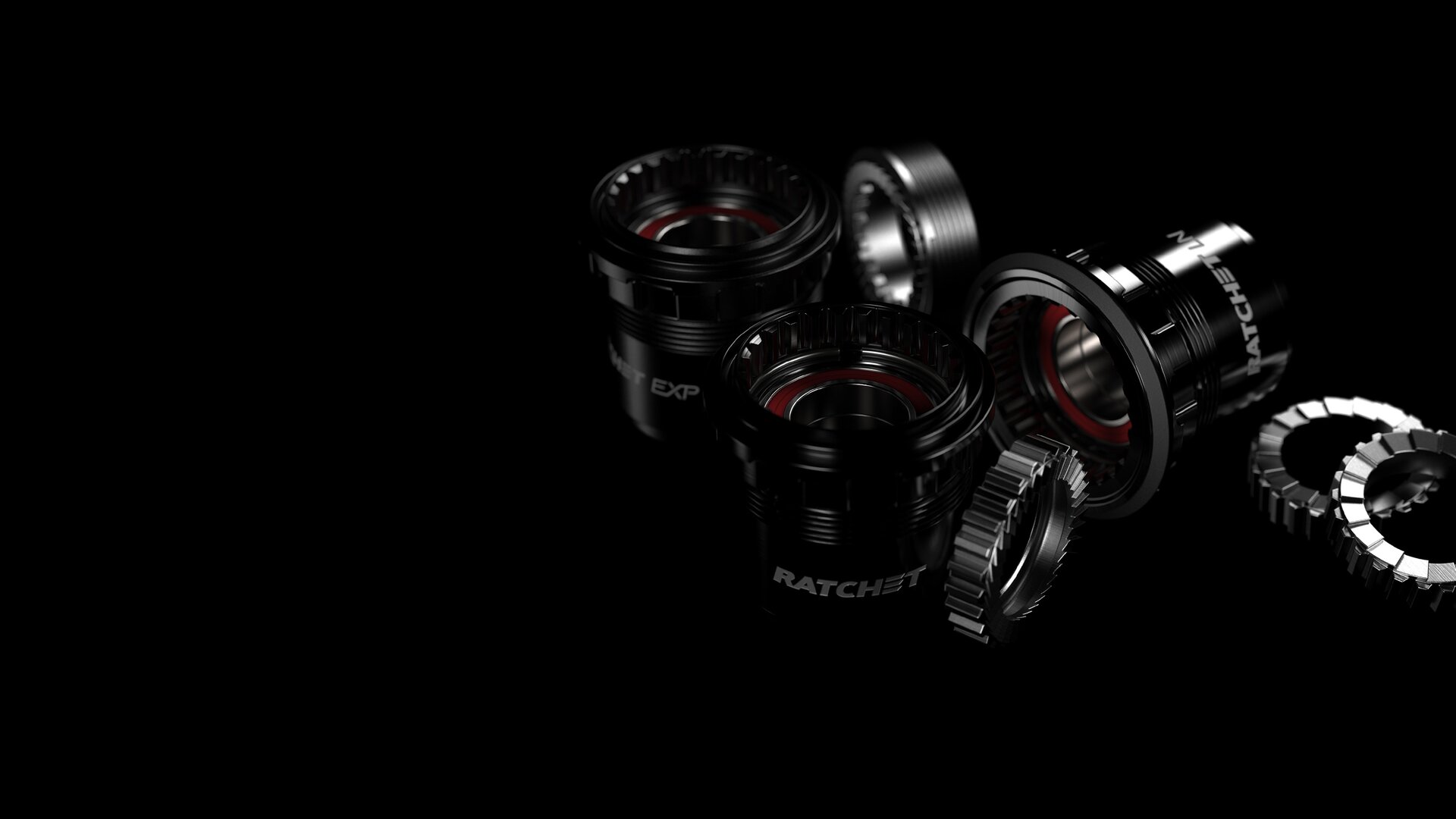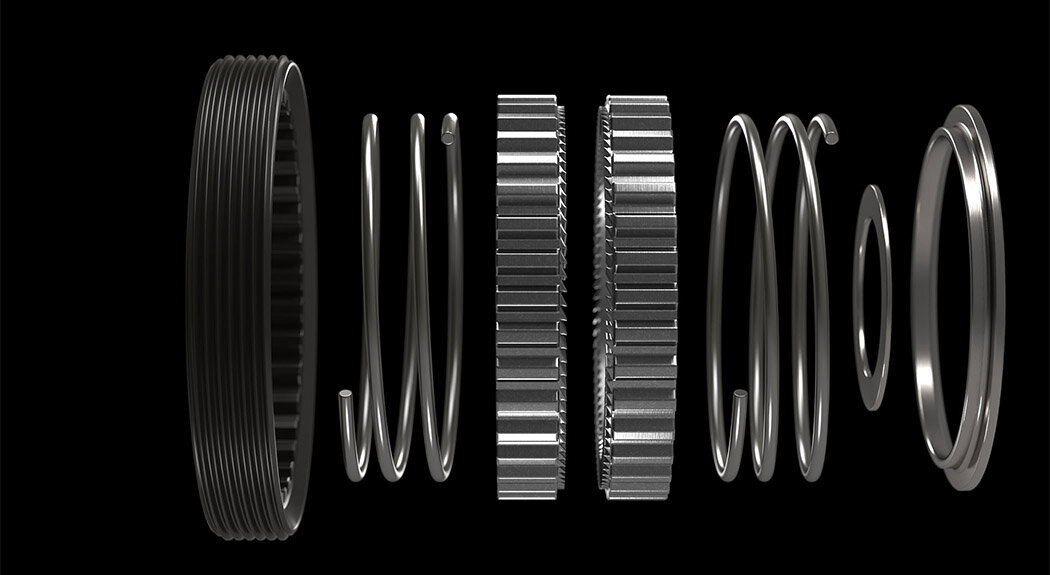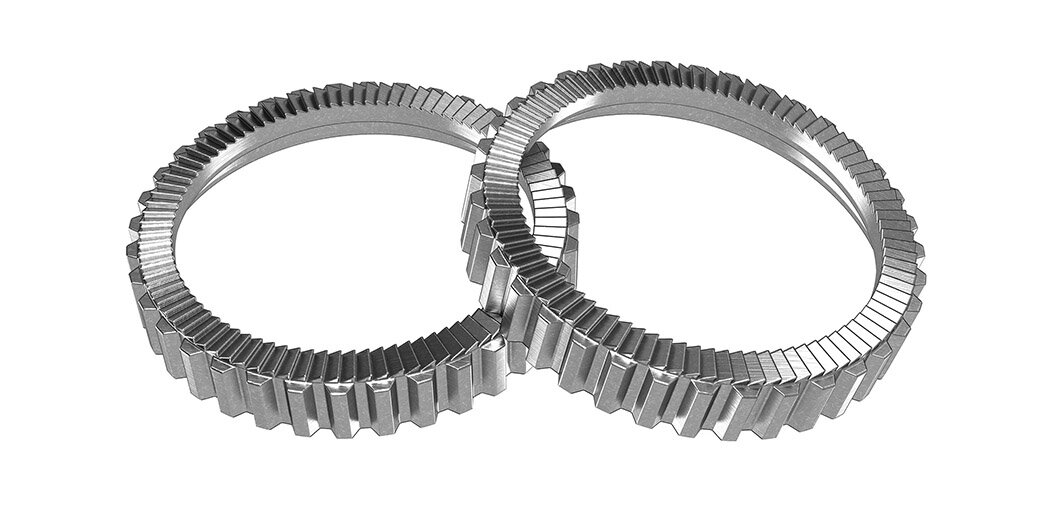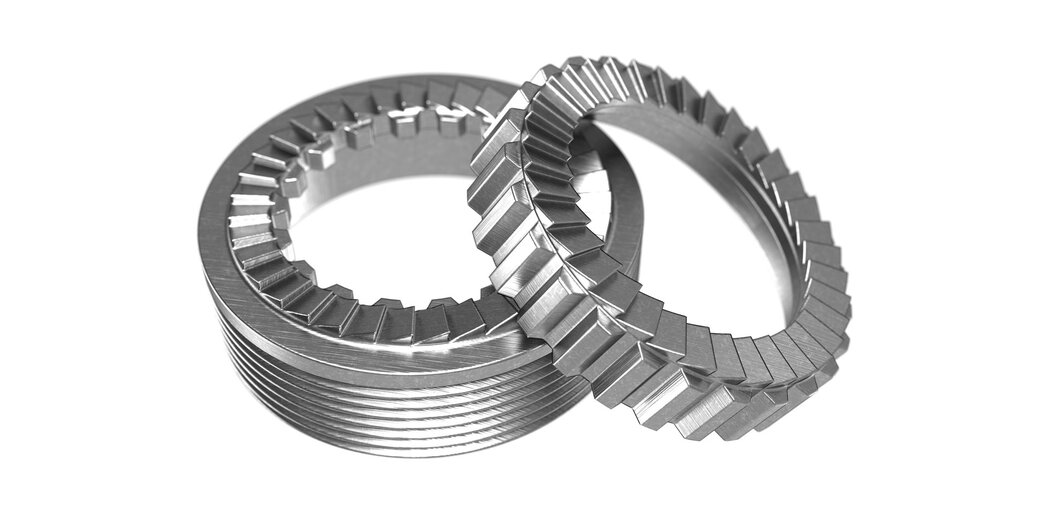Each Ratchet System has its special characteristics, but they all provide the iconic reliability. This is a result of the simultaneous engagement of the teeth, creating far fewer point loads. Discover how the constructions differ and which common features they share.

The Ratchet Technologies
Every ratchet has its purpose. Learn more about the different DT Swiss freehub systems.
used in
RATCHET DEG
The patent pending Ratchet DEG system has been designed to deliver a small engagement angle while maintaining a high reliability.

Ratchet EXP
Ratchet EXP is the lightest freehub system from DT Swiss and is therefore found in the highest specification versions of DT Swiss products like the 180 and 240 hubs.

ratchet exp os
The Ratchet EXP OS is the lightest Hybrid freehub system from DT Swiss and equips the high-end 240 Hybrid hub.

Ratchet
The Ratchet System was the first of this type of freehub system for DT Swiss. The proven system is used in the mid-range of DT Swiss products like the 350 hub.

Ratchet LN
Ratchet LN is the entry level Ratchet System of DT Swiss and is therefore used in the lower price products like the 370 hub. The Ratchet LN replaces the pawl freehub system.

Freehub Systems
RATCHET DEG
The Ratchet DEG system uses a similar principle as the classic Ratchet system but each component has an optimized size because of the bigger ratchets.

Ratchet EXP
The Ratchet EXP requires fewer single parts because of the integration of the ratchet and the threaded ring, which reduces the weight of the system. Only one guided spring is used, which ensures precise engagement. Get to know the Ratchet EXP.

Ratchet exp os
The Ratchet EXP OS keeps the advantages of the Ratchet EXP system but is adapted to the additional loads of eMTB with oversized bearings and bigger threaded ring. Compared to the Ratchet System, which is also used in Hybrid Hubs, Ratchet EXP OS is lighter and more precise. Get to know the Ratchet EXP OS.

Ratchet
The Ratchet System uses two conical springs to ensure the proper alignment of the ratchets. It is marginally heavier than Ratchet EXP. Get to know the Ratchet.

Ratchet LN
Ratchet LN uses the same inner parts as the freehub Ratchet System. The difference lies in the freehub system seal, placed on the freehub body. Get to know the Ratchet LN.

Freehub Bodies
RATCHET DEG
The Ratchet DEG freehub bodies have a bigger diameter at their ratchet interface to suit the size optimized DEG ratchets and are therefore compatible only with Ratchet DEG equipped hubs. The seal is located on the freehub.

Ratchet EXP
Ratchet EXP freehub bodies have a matte finish. These are available in two different versions, with ceramic bearings for the 180 hub and with steel bearings for the 240. Ratchet EXP freehub bodies have no seal themselves, as this sits on the hub shell.

Ratchet exp os
Ratchet EXP OS freehub bodies are all made of specific steel for higher strength and better fatigue resistance of the material. As with the Ratchet EXP, the Ratchet EXP OS freehub bodies don’t have a seal, as this sits on the hub shell. These specific freehub bodies can easily be identified with their blue product name.

Ratchet
The freehub bodies for Ratchet System hubs have a gloss finish and don't have a seal, as this is fixed on the hub shell.

Ratchet LN
Ratchet LN freehub bodies have a freehub system seal, unlike the other systems, as the 370 hub body has no seal. This allows the conversion of pawl hubs to Ratchet LN.

Engagement
RATCHET DEG
The Ratchet DEG system and the new hub body now allow installation of size optimized 90 or 72-tooth steel ratchets delivering an engagement angle of 4° or 5°. DEG ratchets are only compatible with the Ratchet DEG hubs.

Ratchet EXP
The ratchets for the Ratchet EXP System have 36 or 54 teeth. They differ from the classic Ratchet System in that the loose ratchet has a seat for the straight spring. The integration of the ratchet and the threaded ring in the Ratchet EXP also allows for a smaller number of parts due to the use of a single spring. This also reduces the weight of the freehub system.

ratchet exp os
Based on the Ratchet EXP system, the Ratchet EXP OS is also made of fewer components, enabling a lighter system and easier maintenance. The more precise system allows for an increase in the number of teeth to 30, reducing the engagement angle, and providing a small advantage on the free movement of the cranks due to the motor.

Ratchet
The ratchets that make up the hubs equipped with the Ratchet System are composed of 36 teeth. The toothing can be modified to 18, 24, 36 SL and 54 SL. The term "SL" means that the ratchets are additionally machined to make them lighter (Super Light).

Ratchet LN
The ratchets that are used in the Ratchet System hubs are made up of 18 teeth. They can be modified to 24, 36 SL and 54 SL. The term "SL" means that the ratchets are additionally machined to make them lighter (Super Light).
